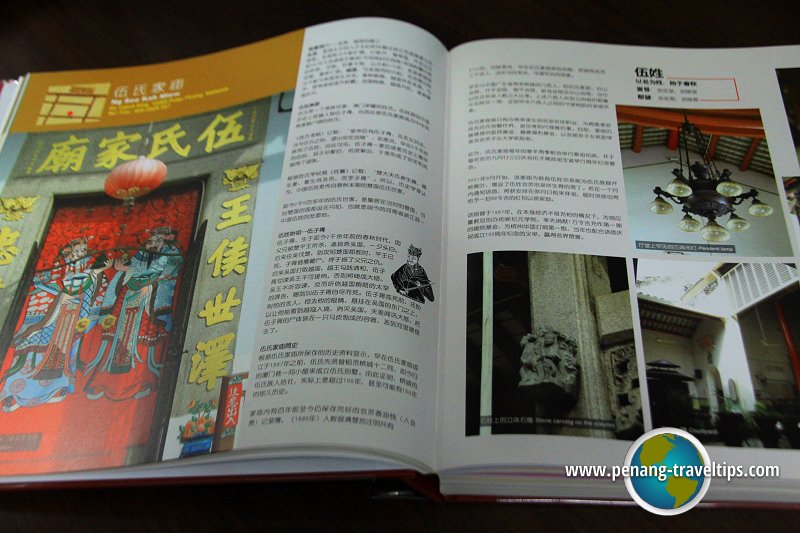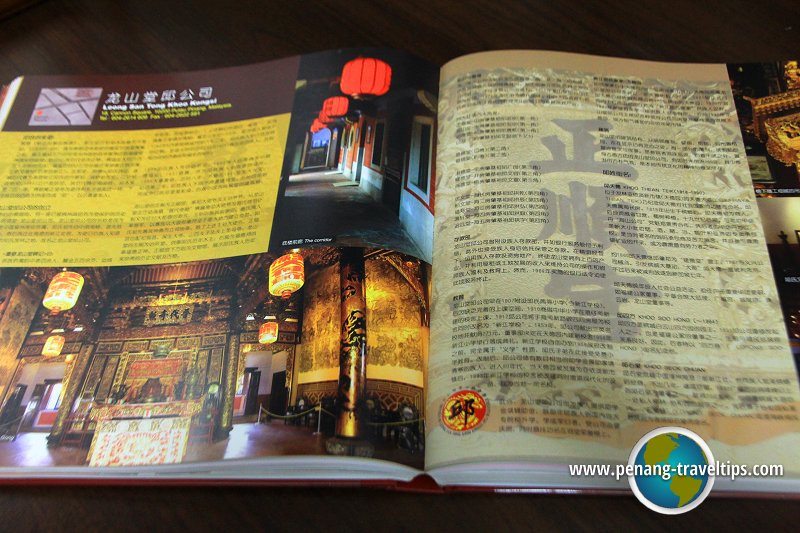 Chinese Clans in Penang: A Concise History (8 October 2015)
Chinese Clans in Penang: A Concise History (8 October 2015)
Chinese Clans in Penang: A Concise History is an endeavour by the Penang Chinese Clan Council to document their identity, and to acknowledge the sacrifice and contribution of ancestors in creating the Penang Chinese society today. To this end, the Penang Chinese Clan Council made a visit to some 170 ancestral halls across Penang State, sitting down with the members, interviewing them to find out the history of each clan, and how it came about. The work was so voluminous that it had to be split into two parts. The council managed to publish Volume 1 in 2013, with further funding required to bring out Volume 2 at a latter date.
Volume One
The first volume of Chinese Clans in Penang: A Concise History is a 378-page full-colour tome. Done bilingually in Mandarin and English, it begins with an explanation on the origin of Chinese surnames. Each surname will have its own ancestral hall, with the shrine venerating its ancestors as well as its patron saints and deities. These hall names are applied to the ancestral hall as well as other related properties such as the courtyards, even the schools that are founded by the clan. Therefore, by seeing the hall name, for example Sinkang, one can tell which clan or surname it belongs to. Chinese Clans in Penang: A Concise History documents the history and origin of about a hundred clans in Penang (8 October 2015)
Chinese Clans in Penang: A Concise History documents the history and origin of about a hundred clans in Penang (8 October 2015)
With some 170 clan association, Penang State has the richest number of ancestral organisations in Malaysia. The book states that the earliest mention of Penang Island was in the nautical chart of Admiral Zheng He, in the 15th century, when it was noted as a sight along the main trading route of Chinese merchants and a stopover for replenishment of fresh water.
The earliest recorded habitation of Penang Island by people of Chinese ancestry was in 1745, of Zhang Li, Qiu Zhao-jin and Ma Fu-chun, whose graves can be seen today beside the Tanjong Tokong Tua Pek Kong Temple. It predates the founding of George Town by Captain Francis Light by a good 41 years.
 Every page is beautifully illustrated (8 October 2015)
Every page is beautifully illustrated (8 October 2015)
The bulk of Chinese Clans in Penang is devoted to providing interpretation of the first one hundred or so clan associations in this compilation. The clans and their corresponding temples are arranged in groups based on their names, and any relationship different clan names may have with one another. As such, the Ma 马 Clan Association is in a group of its own, where as the Wáng 王, Fāng 方, Dèng 邓 and Yóu 尤 clans are grouped together. To prevent overlaps caused by different Chinese language group romanising their surnames in their own way, each is presented using spelling based on Pinyin stripped of the diacritic marks.
The actual names of the clan associations are retained as they are. Therefore the Ma 马 Clan Association is represented as the Persatuan Keturunan Mah See Foo Fong Tong Seberang Perai. Here, Surnamed Ma 马氏 is returned as "Mah See" (rather than the Pinyin "Mǎ shì" or the Pinyin-like "Ma shi").
The Chinese Clans in Penang: A Concise History, Volume 1 is to date the most ambitious and up-to-date bilingual compilation of the history and origin of the clan associations of Penang targeting a mainstream non-scholar audience. My hope is that the clan council will be able to come out with the concluding volume of this series soon.
List of Book Reviews with Timothy Tye

Copyright © 2003-2025 Timothy Tye. All Rights Reserved.

 Go Back
Go Back